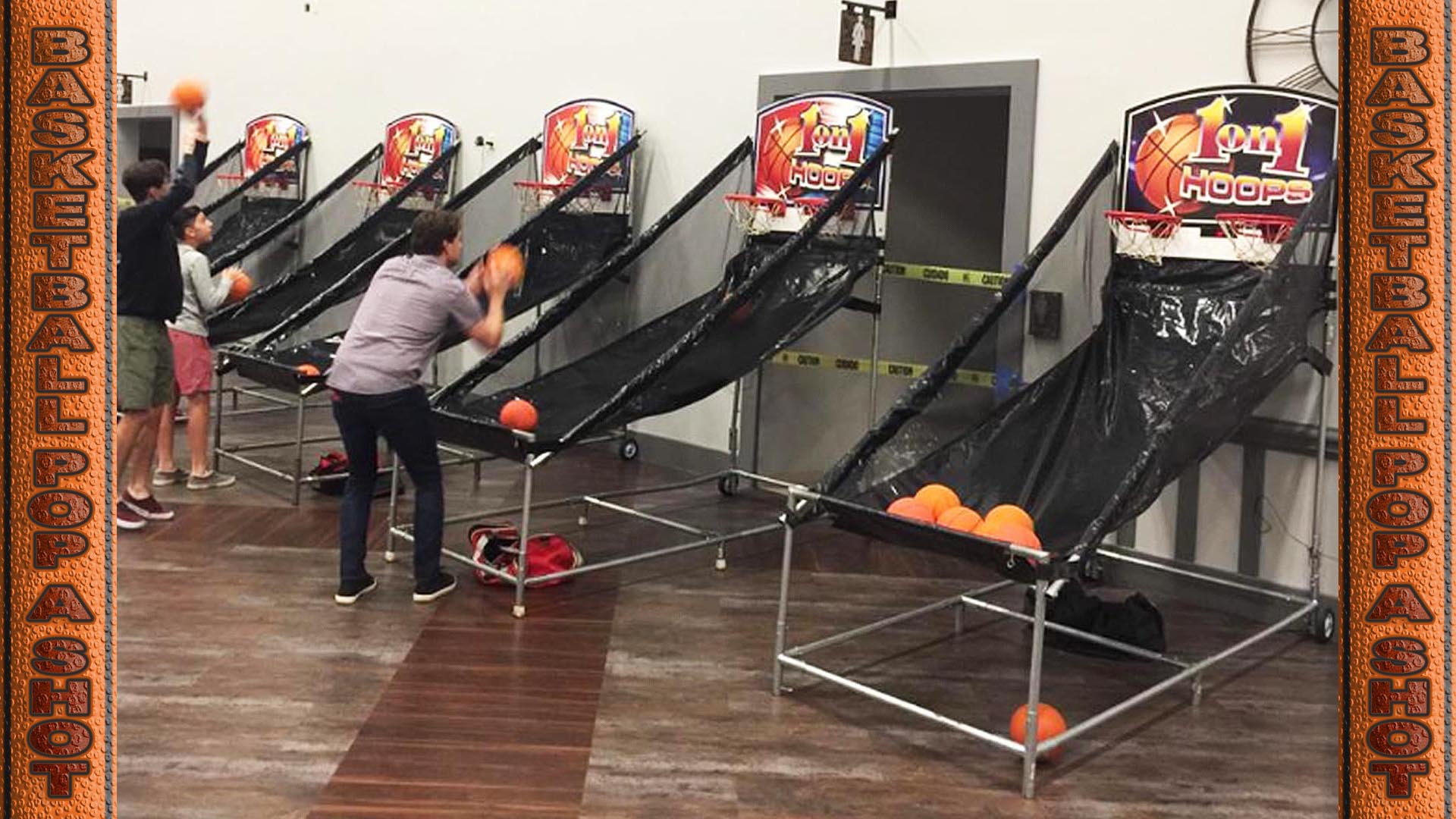
1-On-1 activates the 3 round mode with countdown timer.
#Pop a shot basketball game free#
Free Play activates the Player 1 score count into infinity without a timer - essentially what is built now. Player turns the board on via the side panel and selects game mode. Each player's score is displayed on each side of the board, along with LEDs showing if it is their turn or not (green on means that player's turn.) On the side of the board will be a panel that not only holds the micro-controllers, but also provides an interface to power on, change the game mode, turn the sound on and off, and reset the game. Under this will be 3 LEDs displaying which round of 3 is currently being played. There will be a larger alphanumeric display at the top middle of the board to act as a countdown timer. Scope of the game is 2 players, 3, 30 second rounds, person with the highest total score after all 3 rounds is the winner. General concept is a more true-to-life pop-a-shot. #include "Adafruit_GFX.h" //create Adafruit Alphanumeric Display objectĪdafruit_AlphaNum4 alpha4 = Adafruit_AlphaNum4() //define integerĪlpha4.writeDisplay() } void loop() Īlpha4.writeDigitAscii(2, (highscore%10) + '0') Īlpha4.writeDigitAscii(1, (highscore%100/10) + '0')

Here is the sketch: //include libraries #include Every time the distance sensor is tripped, 1 is added to the integer count, thereby updating the score on the display. I created the breadboard schematic above with Fritzing, but here are the connections I used:Ĭode-wise, I created an integer called Score that is always displayed on the alpha display. It's much smaller and gets the basic job of motion detection done efficiently. I almost went with the ultrasonic distance sensor until I saw the Sharp digital sensor listed in my parts list. Regardless, downsizing to the Micro made the possibility of fitting it all into a half-sized breadboard a reality. I really wanted to use a Trinket instead of the Micro, but I couldn't get my sketch small enough to fit on the Trinket. Scaling down the individually mapped LED segments to a quad alphanumeric display with an IC2 backpack from Adafruit made the coding easier and looked sharper than anything I would make from scratch. Comes with “cheat sheet” for easy reference.Taking ohoilette's concept, I identified that I wanted a basketball hoop that had a visible score displayed, controlled by an Arduino and triggered by a distance sensor focused on the net. And for even more mobility, you can use 4 AA batteries (not included).Ħ total options, including 3 different music selections, sound effects (crowd noise and basket “swishes”) and an announcer who calls the game.Įasily accessible in front of game to turn on, start games, change audio and choose games. You’re not always close to an outlet, so we included an extra-long cord with the AC Adapter.

Also has an audio jack to plug in external speakers (not included).ĪC Adapter/AA Batteries.

Large, three-digit scoreboard with proprietary infrared optical sensor scoring system that correctly registers 98% of shots. Heavy-duty nylon (won’t sag, rip or fray)Įxtra-long arms mean more net to contain shotsĮxtra large (46” x 20”) and extra thick (1/2”) Sturdy 1.5” diameter steel tubing for maximum strength, powder-coated to resist rust and chippingįor easy maneuvering (the only game with wheels)


 0 kommentar(er)
0 kommentar(er)
